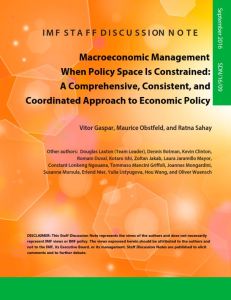Join getAbstract to access the summary!

Join getAbstract to access the summary!
Vitor Gaspar, Maurice Obstfeld and Ratna Sahay
Macroeconomic Management When Policy Space Is Constrained
A Comprehensive, Consistent, and Coordinated Approach to Economic Policy. IMF Staff Discussion Note SDN/16/09
IMF, 2016
What's inside?
The cure for sluggish economic growth is to take a three-pronged approach to setting policy.
Recommendation
A lot has improved since the dark days of the 2008–2009 financial crisis, but many economies are still lagging far behind their potential output. Subdued interest rates and inflation underline the fragility of growth, while stubbornly high deficits inhibit fiscal policy. Economists Vitor Gaspar, Maurice Obstfeld and Ratna Sahay of the International Monetary Fund point out that despite these challenges, things are not as gloomy as they might seem. getAbstract recommends this technical, big-picture analysis of how the world economy can still return to robust growth and even ride out unexpected crises to economists, investors and executives.
Summary
About the Authors
Vitor Gaspar and Ratna Sahay are economists at the International Monetary Fund. Maurice Obstfeld is an economics professor at the University of California, Berkeley, and the IMF’s chief economist.






















Comment on this summary